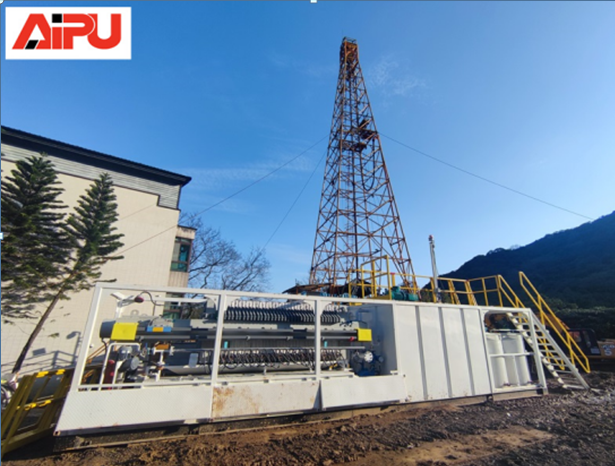Unveiling the Key Role in Drilling
The solids control system is an indispensable component in the drilling industry, playing a pivotal role in securing long - term drilling success. This system is designed to separate solids from the drilling fluid, which is crucial for maintaining the efficiency and safety of the drilling process.
Function of Solids Control System
The primary function of the solids control system is to remove unwanted solids from the drilling fluid. During the drilling process, a large amount of cuttings and other solid particles are generated. If these solids are not effectively removed, they can cause various problems. For example, excessive solids in the drilling fluid can increase its viscosity, which in turn requires more energy to pump the fluid. This not only leads to higher energy consumption but also may cause damage to the drilling equipment. By removing the solids, the system helps to maintain the proper rheological properties of the drilling fluid, ensuring smooth and efficient drilling operations.
Components of Solids Control System
A typical solids control system consists of several key components. The first is the shale shaker, which is the primary solids removal equipment. It uses vibrating screens to separate large cuttings from the drilling fluid. The desander and desilter are also important parts. They use hydrocyclones to remove smaller particles from the fluid. The centrifuge is another crucial component. It can separate extremely fine solids from the drilling fluid by using centrifugal force. Each of these components has its own specific function and they work together to achieve effective solids control.
Benefits for Long - Term Drilling
Implementing an efficient solids control system brings numerous benefits for long - term drilling. Firstly, it extends the lifespan of the drilling equipment. By reducing the wear and tear caused by solid particles, the system helps to prevent premature failure of the equipment, saving significant maintenance and replacement costs. Secondly, it improves the quality of the drilling fluid. A clean drilling fluid can better lubricate the drill bit and the borehole wall, reducing friction and enhancing the drilling speed. Moreover, it reduces the environmental impact. By properly managing the solid waste, the system helps to minimize the pollution to the surrounding environment, which is in line with the sustainable development requirements of the industry.
Challenges and Solutions
However, there are also some challenges in the operation of the solids control system. One of the main challenges is the variable nature of the drilling cuttings. Different geological formations produce cuttings with different sizes, shapes, and properties, which makes it difficult to achieve consistent solids removal. To address this issue, advanced control algorithms and sensor technologies can be used to adjust the operating parameters of the system in real - time. Another challenge is the high cost of the system. To overcome this, companies can optimize the system design and choose cost - effective equipment without sacrificing the performance.
In conclusion, the solids control system is essential for long - term drilling success. By understanding its functions, components, benefits, and challenges, drilling companies can make better use of this system to improve their drilling efficiency, reduce costs, and protect the environment.

Function of Solids Control System
The primary function of the solids control system is to remove unwanted solids from the drilling fluid. During the drilling process, a large amount of cuttings and other solid particles are generated. If these solids are not effectively removed, they can cause various problems. For example, excessive solids in the drilling fluid can increase its viscosity, which in turn requires more energy to pump the fluid. This not only leads to higher energy consumption but also may cause damage to the drilling equipment. By removing the solids, the system helps to maintain the proper rheological properties of the drilling fluid, ensuring smooth and efficient drilling operations.
Components of Solids Control System
A typical solids control system consists of several key components. The first is the shale shaker, which is the primary solids removal equipment. It uses vibrating screens to separate large cuttings from the drilling fluid. The desander and desilter are also important parts. They use hydrocyclones to remove smaller particles from the fluid. The centrifuge is another crucial component. It can separate extremely fine solids from the drilling fluid by using centrifugal force. Each of these components has its own specific function and they work together to achieve effective solids control.
Benefits for Long - Term Drilling
Implementing an efficient solids control system brings numerous benefits for long - term drilling. Firstly, it extends the lifespan of the drilling equipment. By reducing the wear and tear caused by solid particles, the system helps to prevent premature failure of the equipment, saving significant maintenance and replacement costs. Secondly, it improves the quality of the drilling fluid. A clean drilling fluid can better lubricate the drill bit and the borehole wall, reducing friction and enhancing the drilling speed. Moreover, it reduces the environmental impact. By properly managing the solid waste, the system helps to minimize the pollution to the surrounding environment, which is in line with the sustainable development requirements of the industry.
Challenges and Solutions
However, there are also some challenges in the operation of the solids control system. One of the main challenges is the variable nature of the drilling cuttings. Different geological formations produce cuttings with different sizes, shapes, and properties, which makes it difficult to achieve consistent solids removal. To address this issue, advanced control algorithms and sensor technologies can be used to adjust the operating parameters of the system in real - time. Another challenge is the high cost of the system. To overcome this, companies can optimize the system design and choose cost - effective equipment without sacrificing the performance.
In conclusion, the solids control system is essential for long - term drilling success. By understanding its functions, components, benefits, and challenges, drilling companies can make better use of this system to improve their drilling efficiency, reduce costs, and protect the environment.








